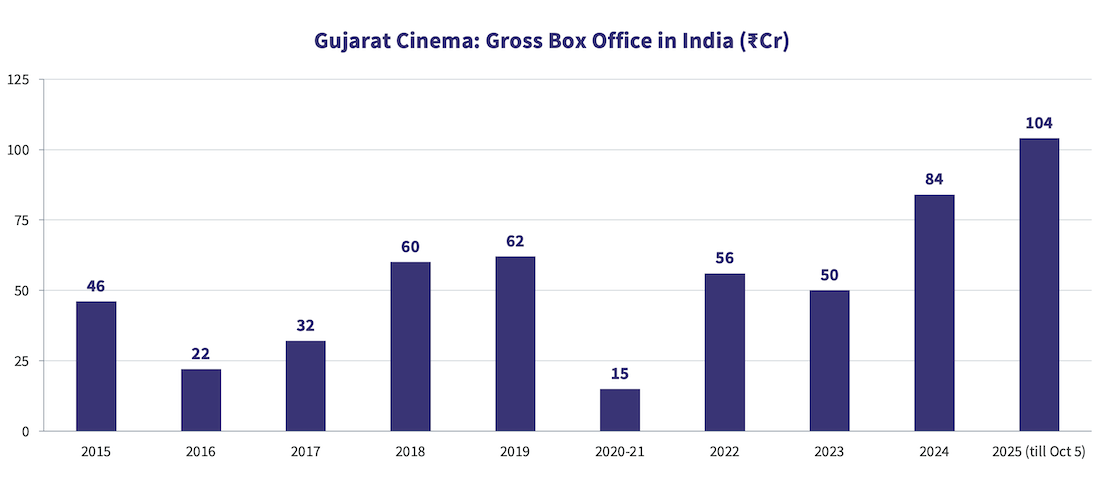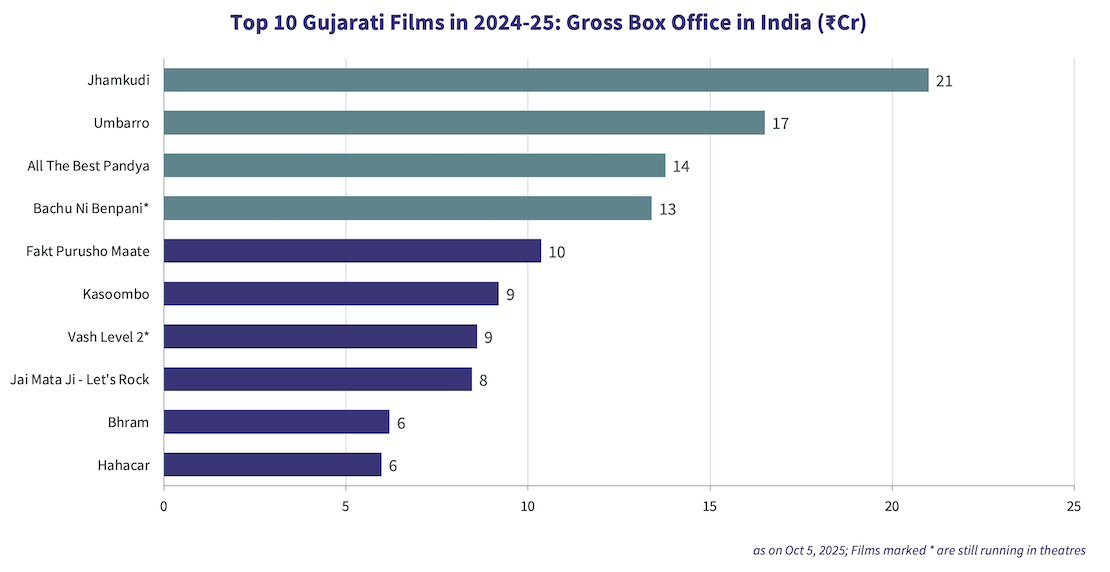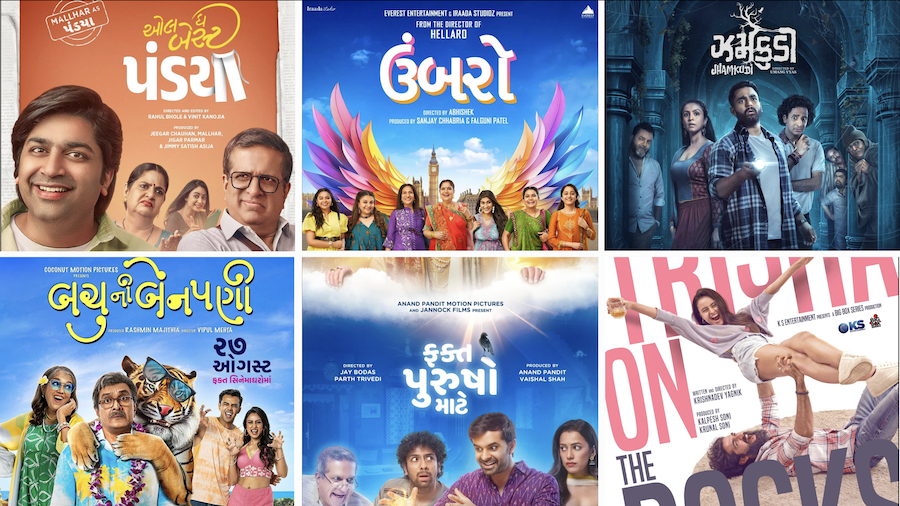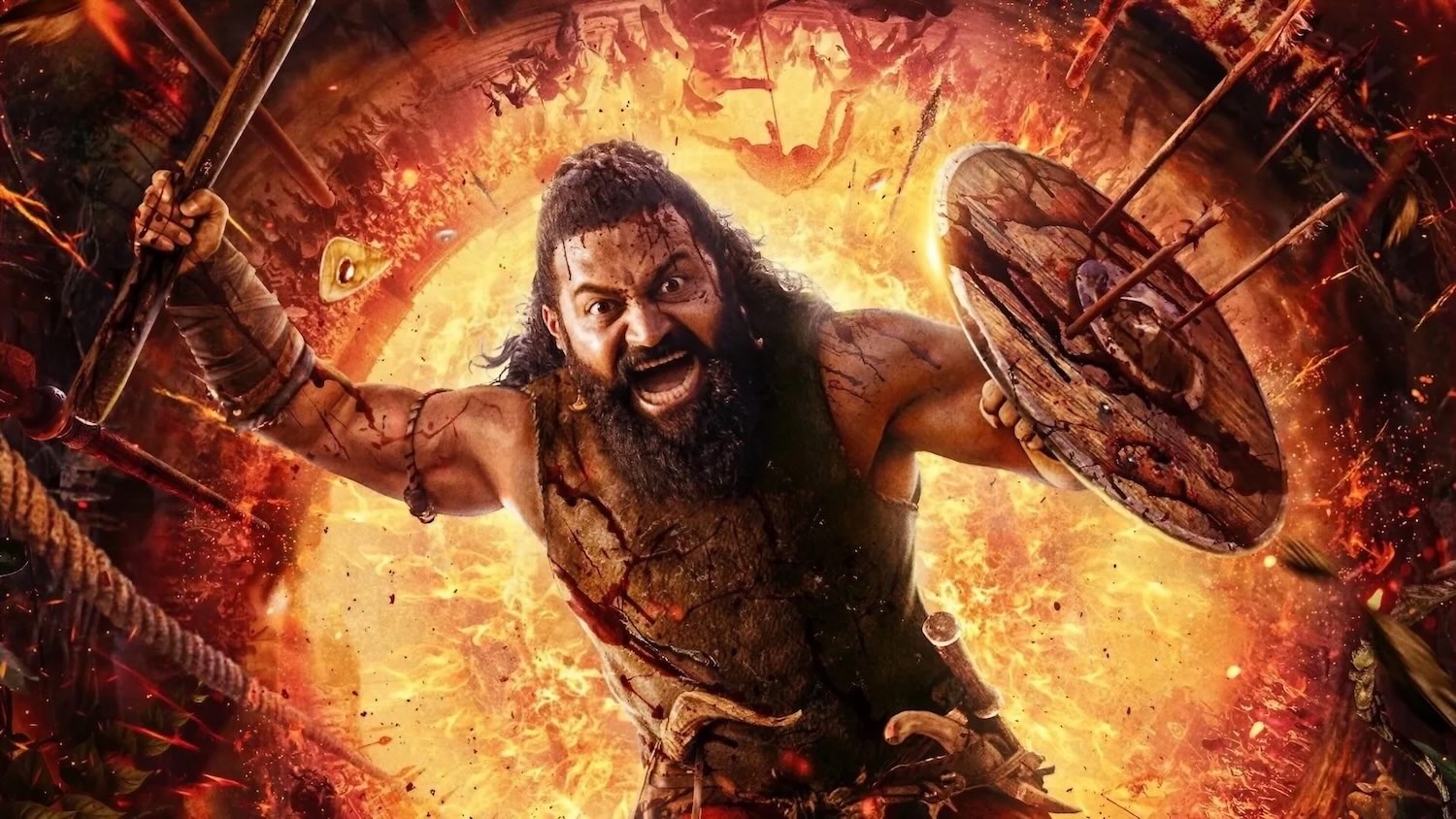


By Nabil Shaikh
In 2025, Gujarati cinema has reached a landmark moment in its theatrical journey. With ₹103 Cr in gross box office and 1 Cr (10 million) footfalls already recorded in 2025 (as on October 5), it has not only broken every previous record in Gujarati film history comfortably, but also crossed a major milestone by overtaking both Punjabi and Marathi cinema in total box office and footfalls in 2025 (after having overtaken Bengali cinema in 2024), becoming the strongest box office language in Indian cinema outside Hindi and the four South Indian languages. As recently as two years ago, no one would have bet on this. Gujarati cinema, once seen as small, struggling, and hyper-local, is now one of the fastest-growing film industries in India.
This remarkable rise didn’t happen overnight. It is the result of a slow but steady decade-long journey marked by experimentation, resilience, and finally, momentum, which began to show visible results from 2024. A closer look at data from the last 10 years reveals not just the size of the 2025 breakthrough, but also the strong foundations built over time, especially in the past two years.

Gujarati cinema’s success in surpassing Punjabi, Marathi and Bengali box office numbers in 2025 is neither a coincidence nor a one-film phenomenon. It is built on a broad, consistent performance across a range of mid-sized films - a stable, repeatable growth engine that is now powering the industry.
While the line-up of Gujarati films that have contributed to this growth story is diverse, both in genre and tone, Gujarati cinema continues to lean strongly toward family-first storytelling, through films that connect across generations and bring families together in theatres.

Jhamkudi opened doors for horror comedy, a rarely explored genre in Gujarati cinema, and became the highest-grossing Gujarati film of 2024. With 2.5 million footfalls and ₹21 Cr at the box office, it combined folklore, fear, and humour in a uniquely Gujarati way.
Umbarro, All The Best Pandya, Bachu Ni Benpani, and Fakt Purusho Maate showed the enduring strength of family comedy and drama - not through loud humour, but through heartfelt stories that resonated with joint families, older audiences, and community groups. Kasoombo stood out as a rare large-scale historical drama in Gujarati, attracting over 1.2 million viewers with its layered storytelling and period setting. Vash Level 2 and Bhram reflected the growing appetite for thrillers and psychological horror. Their success outside the industry’s traditional comfort zone highlights the maturing tastes of Gujarati audiences.

The Gujarati film industry has moved beyond dependence on a few big hits. Two years ago, the film 3 Ekka contributed 60% of the 2023 Gujarati box office. Today, the success is more balanced, driven by multiple mid-sized films earning ₹5-10 Cr each. But Gujarati cinema’s revival runs deeper than its top earners. A new layer of smaller films, earning around ₹3-5 Cr each, has brought consistency to the Gujarati box office. These titles may not dominate trade charts, but they are bold, emotionally rich, and culturally significant.
Romantic dramedy Trisha on the Rocks (₹4.8 Cr) explores pre-marital pregnancy, female independence, and identity within a traditional family. It strikes a balance between urban sensibilities and Gujarati cultural roots, connecting strongly with younger, multiplex audiences. Mom Tane Nai Samjay (₹4.6 Cr) is an emotional drama about generational gap, told with realism and empathy. It follows Aashka, a devoted mother who leaves her family after feeling unseen, only to find meaning mentoring children in need. Jalebi Rocks (₹3.3 Cr) tells the story of a 48-year-old homemaker rediscovering purpose after years of sacrifice. It’s a celebration of late blooming, resilience, and self-worth, connecting especially with middle-aged women and Tier-2 audiences.
Gujarati cinema’s success in 2024-25 comes from a content creation mindset deeply aligned with its audience: Films that are relatable, emotionally engaging, and yet tonally diverse, while staying rooted in language, values, and identity. Unlike other language industries stuck in repetitive templates, Gujarati cinema has embraced variety with balance, making family dramas, thrillers, comedies, and historical stories, all within a culturally-grounded framework. This mix allows Gujarati cinema to reach a wide audience: a 60-year-old in Mehsana, a young woman in Ahmedabad, a community group in Rajkot, and a working couple in Vadodara.
Strong content has been supported by the social ecosystem powered by ‘mandals’ in Gujarat in recent years. Mandals are community groups that have long been part of Gujarati social life, actively organising festivals and neighbourhood events. In recent years, mandals have become more organised because of digital communication methods, especially WhatsApp and UPI payments. As a result, they have also started shaping Gujarati cinema’s theatrical success by booking shows in bulk, thus turning moviegoing into a shared community activity. Once a mandal endorses a film, it triggers a strong word-of-mouth ripple, giving mid-scale releases powerful traction. In an era where conventional marketing alone cannot ensure footfalls, mandals provide something more enduring: a grassroots theatrical engine powered by trust, habit, and cultural connection - a model uniquely Gujarati.
Gujarati cinema isn’t chasing pan-India recognition or OTT dominance. It is quietly building its own theatrical ecosystem - local, loyal, and self-sustaining. The ₹100 Cr milestone has been earned - one rooted story, one community outing, one emotionally honest film, at a time.

Ormax Cinematix's FBO: Accuracy update (November 2025)
This edition of our monthly blog summarises Ormax Cinematix's box office forecasts (FBO) for all major November 2025 releases vis-à-vis their actual box-office openings

Product update: Content testing for the horror genre
Based on our accumulated audience insights, we are introducing genre-specific drivers for horror films and series in our content testing tools, Ormax Moviescope and Ormax Stream Test

The India Box Office Report: October 2025
Driven by Kantara - A Legend: Chapter-1, October 2025 has emerged as the highest-grossing box office month of the year at the India box office, with gross collections of ₹1,669 Cr
Subscribe to stay updated with our latest insights
We use cookies to improve your experience on this site. To find out more, read our Privacy Policy